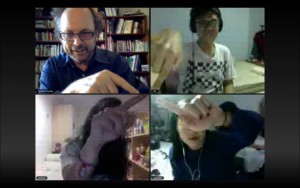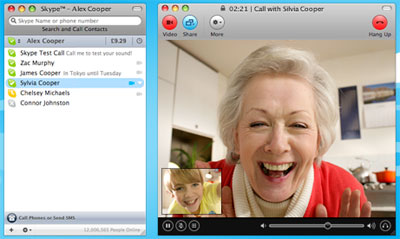I believe that the third space remains the third space. In a way, by partaking in these collective movements (as seen below), it feels as if we are together because we are creating something together.
However, there are distinct differences. When I am Skyping an individual, I am sitting at my desk, looking at my computer and talking to them about this or that. This is not a realistic interaction, unless it was an interview. In real life, my conversations elapse over an activity, be it washing the dishes, making a meal, walking to an event, or sitting over a cup of tea. It is quite rare that two individuals would sit across from each other, directly looking at each other’s faces, and sit there and speak until the conversation is over. A sense of intimacy and closeness can be felt from this interaction, as there is a similar stimulation coming from the auditory and visual parts of our brain (we can hear and see each other). Nevertheless, the interaction is missing the intimacy of being able to feel the physical presence of someone there with you. Of course the third space can be playful, absurd or compelling, as is seen in Hole-In-Space, when the knowledge of the third space and the protective barrier of known true distance allowed the individuals to act abnormally while remaining safe.



